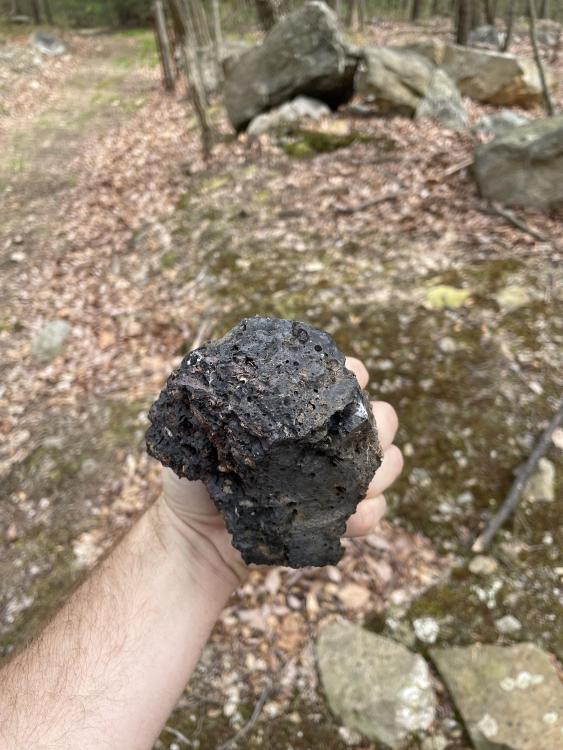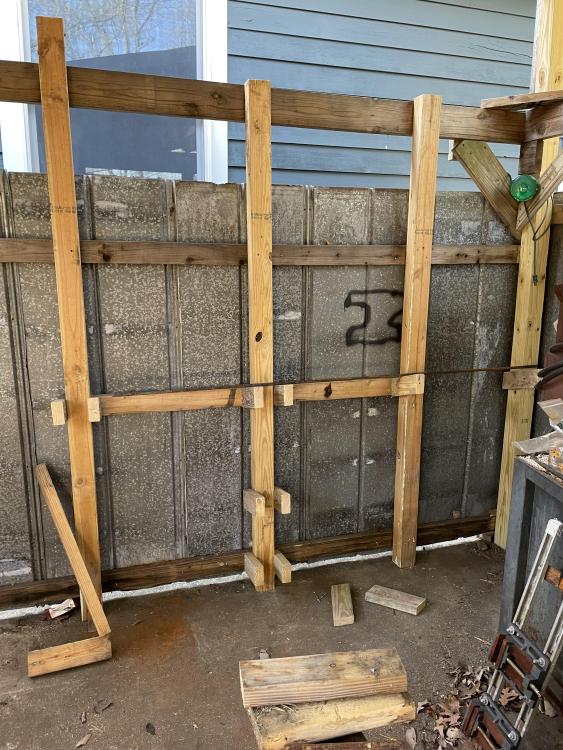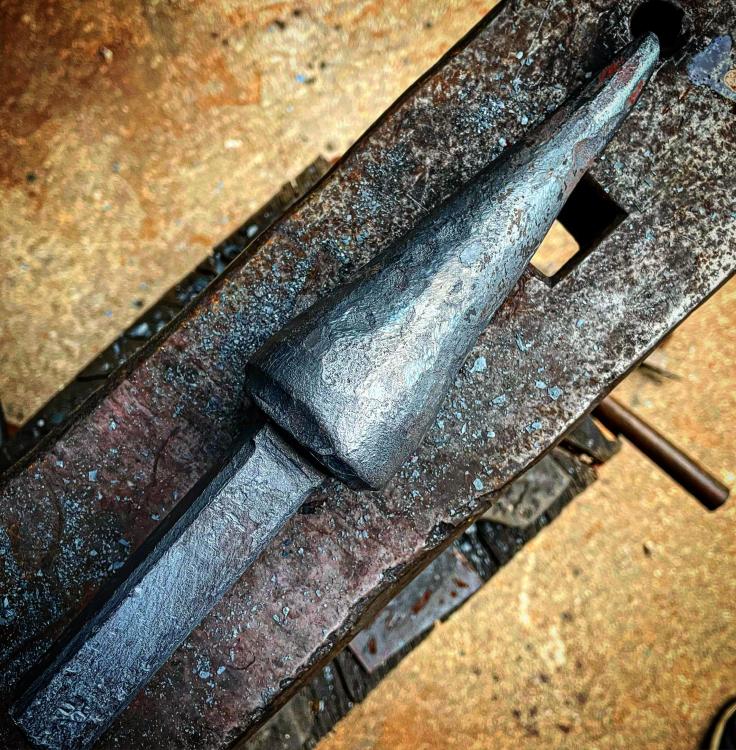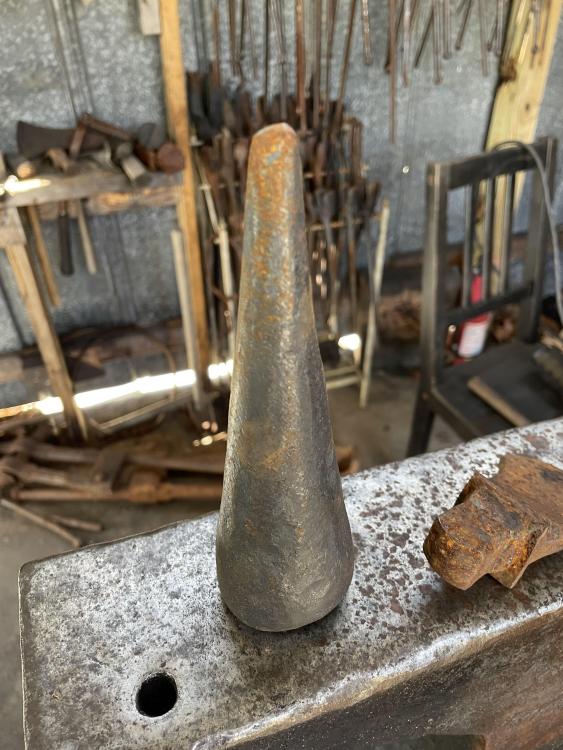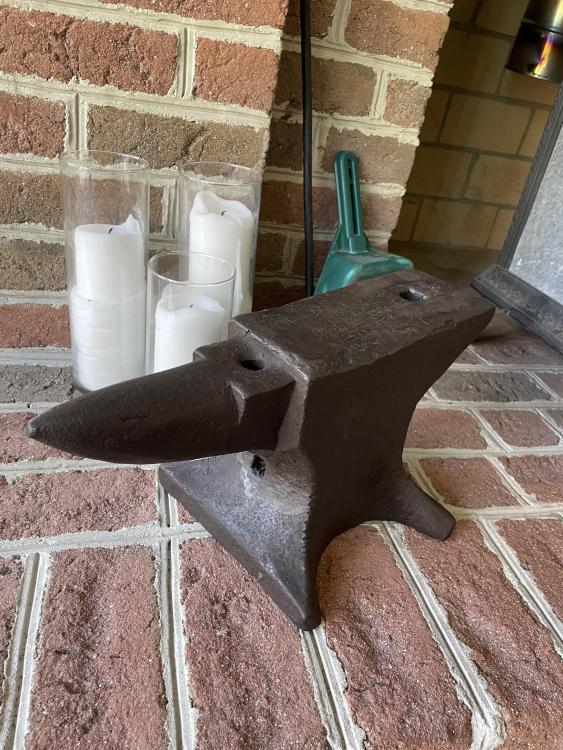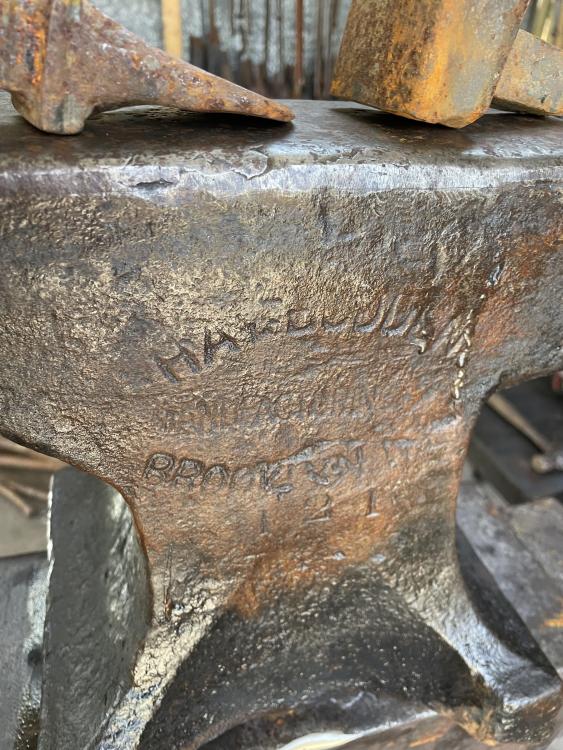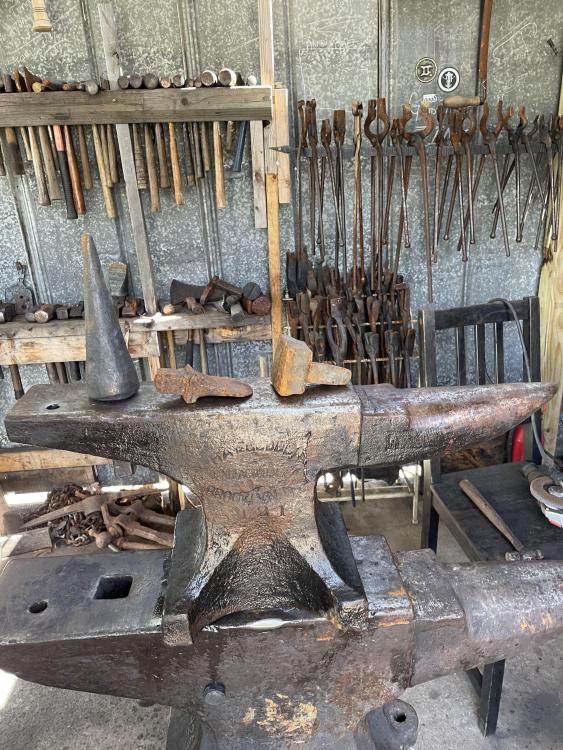-
Posts
102 -
Joined
-
Last visited
Content Type
Profiles
Forums
Articles
Gallery
Downloads
Events
Everything posted by Ridgeway Forge Studio
-
Looks to be cast iron, likely tool steel top plate? Yours is in good condition. its special to have family heirlooms that you get to use!
-
Now I want to try it so that you can know someone who has done it! if done properly, wouldn’t it be just as secure as the easy way?
-
Frosty, I agree with you for rings bent the hard way- but I found for thin stock rings bent the easy way it is more finnicky to try and scarf them to weld flat.
-
Welding is easy once you forget it’s hard. I tend to do sloppy, dirty welds- I rarely scarf or upset, I get it too hot, I don’t flux- and sometimes it doesn’t work. But I suppose it all goes to show that there is a spectrum of “right” ways to weld. Smarter blacksmiths than me have failed with more precise parameters. have fun with welding
-
Welcome aboard! That’s a very nice looking anvil, near mint condition . Good score! Frosty will be along shortly to congratulate you as well- he’s the local expert of Coleslaw anvils
-
I mostly use the horn of my anvils as fullers and to true up bottle openers. It allows me to hit the ring at an angle and leave a pretty chunky amount of hammer marks on both the inside and outside of the ring. The only other thing I can think of I've done with a horn in the last few years is weld 12-14" rings on it. Work well for that, before taking that ring to the floor cone. Scrolls, finials, hooks, curves I all do at the edge of the anvil.
-
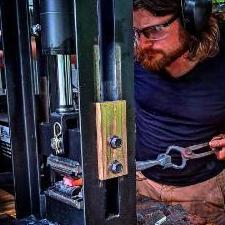
The most useful blacksmithing ideas
Ridgeway Forge Studio replied to Glenn's topic in Shop Tips n' Tricks
George, I paid the price of not being able to get something I loved- Trader Joe’s used to have a seasoning blend called Ajika- it was the best for eggs. But they stopped making it and I haven’t had it in half a year. -

The most useful blacksmithing ideas
Ridgeway Forge Studio replied to Glenn's topic in Shop Tips n' Tricks
I know its been some time, but I have some contributions. If you find good blacksmithing coal (burns hot, clean and welds nicely), buy as much as you can. There is no saying if you will ever find it again. Wipe your tools down with oil when the weather changes, unless you are in the desert. The changing temperatures can cause flash rust on big heat-sinks like anvils. Oil helps. (or wax or whatnot) Slack tub water works for poison ivy. This in no way guarantees that it will not cause an infection since it is dirty water. When you need nuts and bolts for a project, buy one extra. It saves a trip. Learn when your body wants to sit down, lie down, drink water, drink gatorade, go inside etc. Most injuries occur because you did not listen to your body's cry for mercy. Don't ruin a piece because you refuse to take a break. Eye protection. Everyone, every time. -

What did you do in the shop today?
Ridgeway Forge Studio replied to Mark Ling's topic in Blacksmithing, General Discussion
Billy that’s some nice work. Just keep an eye on him if he starts buying bulk pork and beans and tnt -
I have a suspicion that the caffeine will only make them sentient.... Have you tried an atom bomb or perhaps death laser? In all seriousness, I have never tried, because yellow jackets are God's curse for man's hubris. I hate them so much. They nest in our ground next to the septic tank and cause me royal grief when I try to weedwhack. Perhaps someone with a entomological bent will try it and get back to us?
-

More Hacks (Tips). Worth a look.
Ridgeway Forge Studio replied to SLAG's topic in Shop Tips n' Tricks
Scott, preach. Rest in peace, 1994 Chevy Lumina. -
It is the time of the year in Maryland where the wood bees and mosquitos come out and love to harass innocent blacksmiths- but I have a solution! go to the store, buy a bag of espresso ground coffee, add some to a dish (it will get very stained, so a metal dish or ceramic dish you don’t care about) and light it on fire like incense. the smell is bearable, but bugs hate it. It can clear out a 20x20 shop easy, and it burns steadily depending on how much you have.
-
That is a deeply evocative piece. I agree that the welds being imperfect fit the idea of a jail - unless its meant to be a window? But it captures the unexpectedness of loss and longing, no time to perfect the cage that holds us back...
-

Is this slag?
Ridgeway Forge Studio replied to Ridgeway Forge Studio's topic in Smelting, Melting, Foundry, and Casting
That’s not too far away from Longwood Gardens- there’s some nice blacksmithing work in the park, as well as some incredible gardens -

Is this slag?
Ridgeway Forge Studio replied to Ridgeway Forge Studio's topic in Smelting, Melting, Foundry, and Casting
When you make it down this way, stop by! The Mrs and I have plenty of space! George, thanks for that information. I wasn’t aware of the reasons behind the legality of slavery in union states. The Slag may have been used as road fill- there is an old path that leads over the mountain from a failed ski resort construction project…. -

Is this slag?
Ridgeway Forge Studio replied to Ridgeway Forge Studio's topic in Smelting, Melting, Foundry, and Casting
I will test with a compass, Frosty. We are about 4 miles away from the Catoctin Iron Furnace, which was a fairly large iron producer during the Civil War. Despite being in the north, it 'employed' a large number of African American slaves, which is a sad mark on our hometown. But the iron furnace is still there - they have a festival every year that for the past two years I have demonstrated at. They do a live iron pour, which is really quite something. I doubt they would have carted the slag a full four miles, considering the iron furnace was downhill and there is a perfectly good valley to dump slag in. All surrounding us there are old sites where iron was produced even in the colonial era, I believe. We found an old wrought horse/mule shoe decades ago - the grain is clearly visible, and would make sense given the iron and charcoal. Here's the website for the foundation preserving the heritage of the Iron Furnace: https://catoctinfurnace.org/ Really cool piece of history, although I'm biased for living next to it. -
I live in the Catoctin mountains in Maryland, which was historically a very big charcoal and iron producing region. hiking behind my house, I found this rock. To my knowledge there was no iron production on my property, but this piece of “rock” looks suspiciously like slag, which leads me to think iron used to be produced very near where my blacksmith shop is currently.
-

Hardy Cone
Ridgeway Forge Studio replied to Ridgeway Forge Studio's topic in Tools, general discussion
Thanks, Frosty. I am grateful for this forum, even if it’s not as busy as it used to be. irondragon- that was my past two years. Clearing trees and splitting firewood. A lot of my previous projects suffered from creative burnout, so I took a hiatus and took up ceramics to keep myself making -

What did you do in the shop today?
Ridgeway Forge Studio replied to Mark Ling's topic in Blacksmithing, General Discussion
Finally after months of disarray I made it into the shop. I did some clean up and most importantly started to build a stock rack against one wall. all of my stock previously sat outside on the ground. It was not good, to say the least. -

Hardy Cone
Ridgeway Forge Studio replied to Ridgeway Forge Studio's topic in Tools, general discussion
I did a lot of it under the 12 ton hydraulic press , but cleaned it up by hand. I hot rasped it to its final dimension- I meant to go over it again with the belt sander, but it fell into the “tomorrow” pile, never to receive its just reward. it goes along with an anvil I’m parting with, otherwise I would go back over it to finish… but there is always the next one! -
I thought I would share a tool I made a while ago- a hand forged cone for the hardy hole. This is as forged and filed, no grinding done. obviously it needs cleanup, and I should have been more judicious with my hammer blows. but, it works as intended- and is very useful.
-

Show me your anvil
Ridgeway Forge Studio replied to Glenn's topic in Anvils, Swage Blocks, and Mandrels
here’s my new indoor anvil- graduated from a life of hard work, much too hard for it’s tiny weight class. -

Show me your anvil
Ridgeway Forge Studio replied to Glenn's topic in Anvils, Swage Blocks, and Mandrels
Jennifer, I recently picked up a later 180 ish lb Hat Budden with a very rough face- but it’s hardy hole matches the size of most of my hardy tools (they were a gift from a downsizing friend) I will post a picture once I clean up my shop- I recently got into ceramics and haven’t forged since Christmas… my first “real” anvil I moved inside next to the fireplace- 75lb London pattern, pre- 1860s with a retrofitted Pritchel on the cutting table. It’s a beautiful little anvil, the face is almost worn through on the sweet spot. the 121lb I traded a 300ish lb Austrian anvil for- found I didn’t use it that much. I try and cap my anvil limit so I don’t get accused of hoarding! -

Show me your anvil
Ridgeway Forge Studio replied to Glenn's topic in Anvils, Swage Blocks, and Mandrels
I thought I would share my 121 lb Hay Budden - Sadly I'm parting with her, I have already more anvils than I need. -
I think this addresses a few things: Anvil edges should not be 'sharp' - they are, in fact, radii fullers in a certain sense. Also, that Brian Brazeal video is the one I was thinking of for the effectiveness of moving metal with half faced blows. The answer to this thought experiment won't change my use of the horn, practically speaking, but it may go to show alternative ways to use hornless anvils or improvised anvils. The horn is a big draw for people, I think, and between that and the square tool holder on most London Pattern anvils, its what people most often stick on when buying an anvil. Understanding all parts of an anvil and their uses is important to know what is and is not quality. The anvil in the original post as the Hardy Hole - So a horn is not really that big of an advantage, especially if only used to true up rings - you can just as easily make a mandrel. But the anvil above has edges - these can be used just as well as a horn to draw out material.


